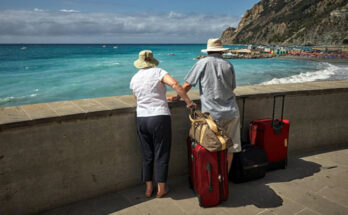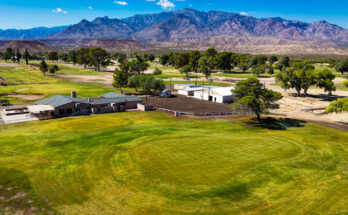Introduction to Drowning Case Experts
Drowning incidents are tragic events that leave lasting impacts on families and communities. Beyond the emotional toll, these incidents often raise complex legal questions about negligence, liability, and safety standards. Drowning case experts play a pivotal role in addressing these questions, bringing specialized knowledge to legal proceedings. With expertise in areas like water safety, rescue procedures, and hydrology, these professionals help uncover the factors contributing to drownings, ensuring justice and promoting safer water environments.
According to the Consumer Product Safety Commission (CPSC), between 2019 and 2021, an average of 358 pool- or spa-related fatal drownings were reported each year for children under 15 in the United States, with 75% of victims being younger than 5 years old (CPSC Drowning Report). These sobering statistics underscore the importance of expert analysis in understanding the causes of such tragedies and determining accountability in legal cases.
This blog post explores the vital role of drowning case experts, with a focus on the hydrological expertise provided by professionals like those at Water Resources Consulting Services (WRCS). With over 35 years of experience, WRCS exemplifies the expertise and trustworthiness required to navigate complex drowning-related litigation.
Understanding Hydrological Factors in Drowning Incidents
Drowning incidents occur in diverse settings, from residential pools to natural waterways. However, certain water structures and hydrological conditions significantly increase the risk of drowning. Experts in hydrology are uniquely equipped to analyze these factors, providing critical insights into how environmental conditions contribute to such incidents.
Common Water Structures Involved in Drownings
Several water structures are frequently implicated in drowning cases due to their hazardous hydraulic properties. These include:
- Siphons: These can create powerful suction forces that pull individuals underwater.
- Spillways: Often found in dams, spillways can generate turbulent flows that pose risks to swimmers.
- Low-head dams: Known for creating dangerous recirculating currents, these structures can trap individuals, making escape nearly impossible.
- Culverts: These can produce strong water flows that overwhelm unsuspecting victims.
- Irrigation canals: Poorly designed or maintained canals may have fast-moving water or hidden hazards.
- Water delivery intakes: These can create suction zones that endanger swimmers.
Each of these structures has unique characteristics that require expert analysis to determine their role in a drowning incident.
The Science Behind Drowning Hydraulics
Hydrology experts apply principles of fluid dynamics to understand how water behaves in these structures. For example, low-head dams are notorious for creating a “hydraulic roller,” a recirculating current that can trap swimmers beneath the surface. Similarly, siphons and culverts can generate suction forces that are difficult to escape. By conducting site inspections, reviewing design documents, and using computational models, experts can identify whether these hydrological factors contributed to a drowning, providing evidence that is critical in legal proceedings.
Services Provided by Drowning Case Experts
Drowning case experts offer a range of services to support legal teams, ensuring that technical aspects of a case are thoroughly examined and clearly presented. These services include:
Expert Testimony and Reports
A primary role of drowning case experts is to provide expert testimony in court. They prepare detailed reports that outline their findings, often including technical analyses, simulations, visual aids, and graphics to make complex concepts accessible to judges and juries. These reports are grounded in scientific evidence, ensuring credibility and reliability in legal settings.
Analysis of Hydraulic Systems
Experts conduct in-depth analyses of the hydraulic systems involved in drowning incidents. This may involve evaluating the design and maintenance of water structures, measuring water flow rates, and simulating incident conditions. For instance, an expert might analyze the flow dynamics of an irrigation canal to determine if its design created hazardous conditions that led to a drowning.
Consultation on Case Strategy
Beyond testimony, drowning case experts consult with legal teams to develop effective case strategies. They advise on technical aspects, suggest questions for witnesses, and help interpret evidence related to water conditions and safety measures. This collaborative approach ensures that legal arguments are supported by robust scientific analysis.
Choosing the Right Drowning Case Expert
Selecting the right expert is crucial for the success of a legal case. Here are key factors to consider:
Qualifications and Experience
A qualified drowning case expert should have a strong educational background in fields like hydrology, civil engineering, or aquatic safety. Practical experience in analyzing water-related incidents and providing litigation support is equally important. For example, WRCS experts, led by Rick Van Bruggen, bring over 40 years of engineering experience and 35 years of litigation support, making them highly qualified to handle complex drowning cases.
Track Record and Reputation
An expert’s track record in similar cases is a strong indicator of their effectiveness. Look for professionals with a history of providing unbiased, objective testimony and a reputation for integrity. WRCS, for instance, prides itself on delivering non-conflicted testimony, serving both plaintiff and defendant clients across the U.S., Canada, and Australia.
Key Qualifications for Drowning Case Experts
| Qualification | Description |
| Educational Background | Advanced degrees in hydrology, civil engineering, or aquatic safety. |
| Practical Experience | Extensive experience in analyzing water-related incidents and litigation support. |
| Testimony Skills | Ability to present complex technical information clearly to non-experts. |
| Reputation for Objectivity | Commitment to unbiased, evidence-based analysis. |
Real-World Applications: Case Studies
To illustrate the impact of drowning case experts, consider the following real-world examples from WRCS’s portfolio:
Case Study 1: Drowning in an Irrigation Canal, Mesquite, NV
In a case involving a drowning in an irrigation canal, WRCS experts evaluated the canal’s hydraulic properties and safety measures. Their analysis revealed that the canal’s design created hazardous flow conditions, and inadequate safety signage contributed to the incident. The expert’s rebuttal report was instrumental in establishing liability, supporting the client’s case (Client: Wolfe & Wyman LLP, Las Vegas, NV).
Case Study 2: Drowning at a Low-Head Dam, Butte County, CA
A tragic drowning of a twelve-year-old boy occurred at a water delivery gate and culvert. WRCS experts analyzed the hydraulics of the structure, demonstrating how the design created dangerous conditions. Their testimony helped clarify the technical factors for the court, contributing to a fair resolution of the case.
These cases highlight how hydrological expertise can uncover critical details that influence legal outcomes.
The Importance of Unbiased Expert Testimony
The credibility of expert testimony is paramount in legal proceedings. Drowning case experts must provide objective, evidence-based analyses to maintain trust and ensure justice.
Ensuring Objectivity in Legal Cases
Reputable experts, like those at WRCS, are committed to delivering unbiased testimony. They analyze cases honestly, even if it means identifying weaknesses in a client’s case theory. This approach not only upholds their professional integrity but also ensures that the court receives accurate and reliable information.
Making Complex Concepts Accessible
One of the challenges in drowning cases is explaining complex hydrological concepts to judges and juries who may lack technical backgrounds. Skilled experts use clear language, analogies, and visual aids to make their findings understandable. For example, WRCS experts create graphics and simulations to illustrate how water flow contributed to an incident, ensuring that all parties grasp the key issues.
Frequently Asked Questions About Drowning Case Experts
- What qualifications should a drowning case expert have?
A drowning case expert should have advanced degrees in hydrology, civil engineering, or aquatic safety, along with extensive experience in analyzing water-related incidents and providing expert testimony. - How do drowning case experts analyze a drowning incident?
Experts review incident reports, medical records, design documents, and witness statements. They may conduct site inspections and use computational models to simulate water flow and incident conditions. - Can a drowning case expert help in both civil and criminal cases?
Yes, experts can provide testimony and analysis in civil cases (e.g., wrongful death or premises liability) and criminal cases (e.g., involving negligence or manslaughter). - What is the role of hydrology in drowning cases?
Hydrology experts analyze water flow and structural design to identify hazardous conditions, such as strong currents or suction forces that may have contributed to a drowning. - How can I find a reputable drowning case expert?
Look for experts with relevant qualifications, a proven track record, and a reputation for unbiased testimony. Firms like WRCS, with decades of experience, are a reliable choice. - What kind of evidence do drowning case experts review?
Experts examine incident reports, design and maintenance records, water flow data, weather conditions, and any available video or photographic evidence to build a comprehensive analysis.
Conclusion
Drowning case experts, particularly those with hydrological expertise like WRCS, play an indispensable role in legal proceedings. By analyzing complex water-related factors, providing unbiased testimony, and making technical concepts accessible, they help ensure fair outcomes in cases involving drownings. Their work not only supports justice but also contributes to improving water safety standards, potentially preventing future tragedies. For legal teams seeking reliable and authoritative expertise, choosing a qualified drowning case expert is a critical step toward achieving a just resolution.










